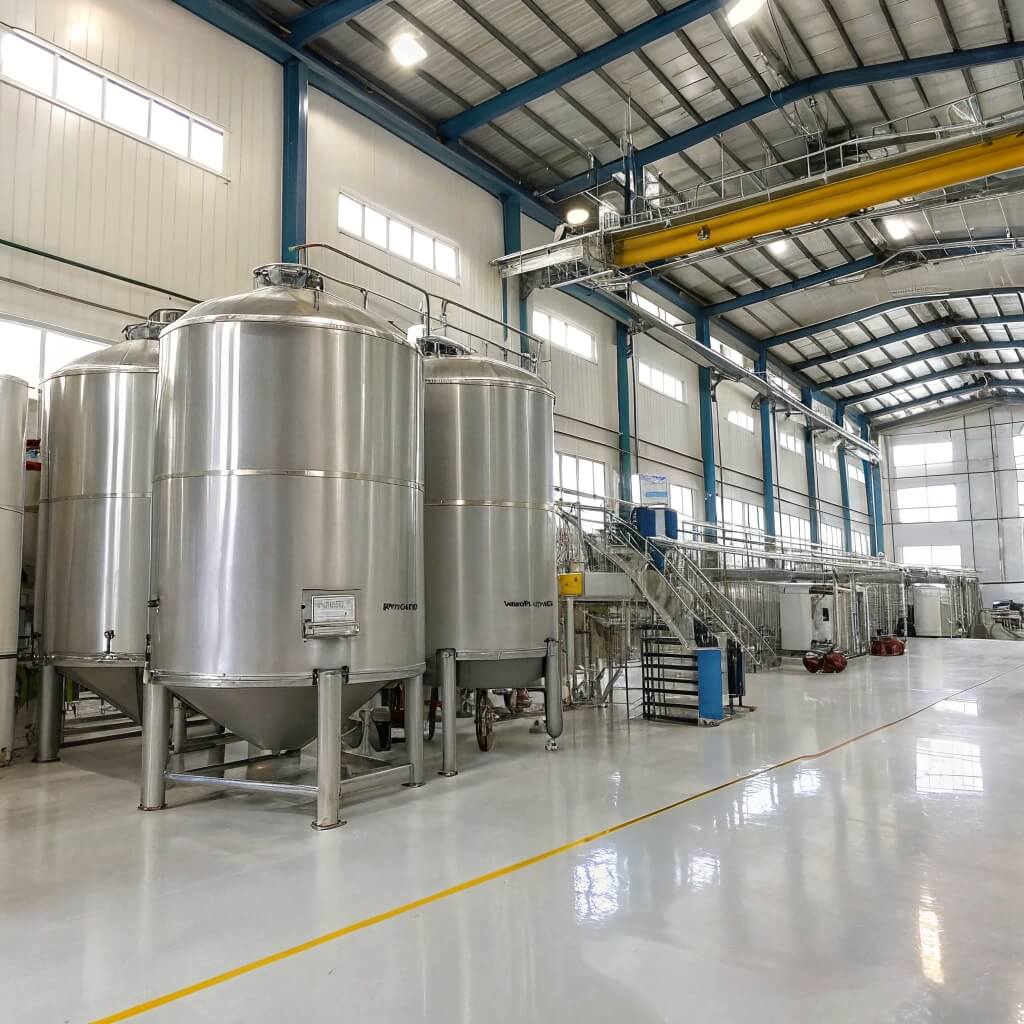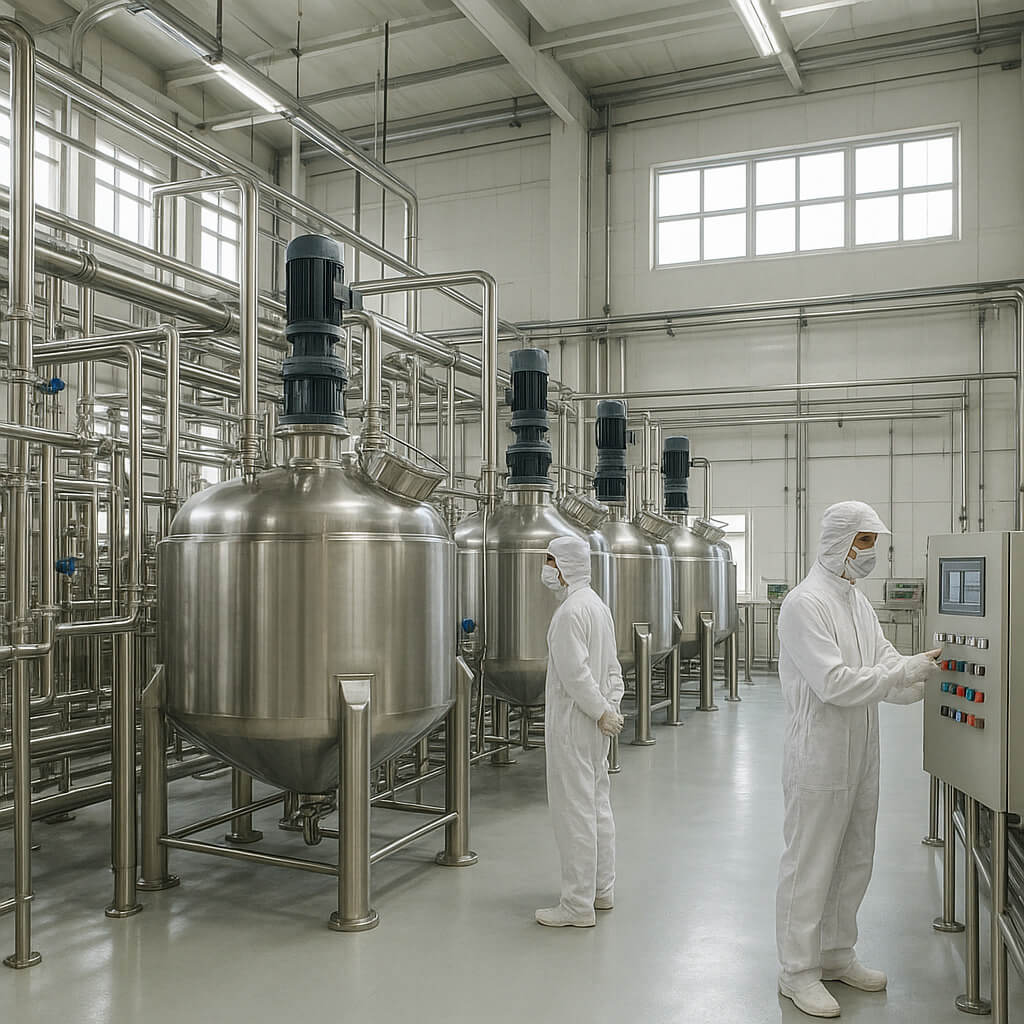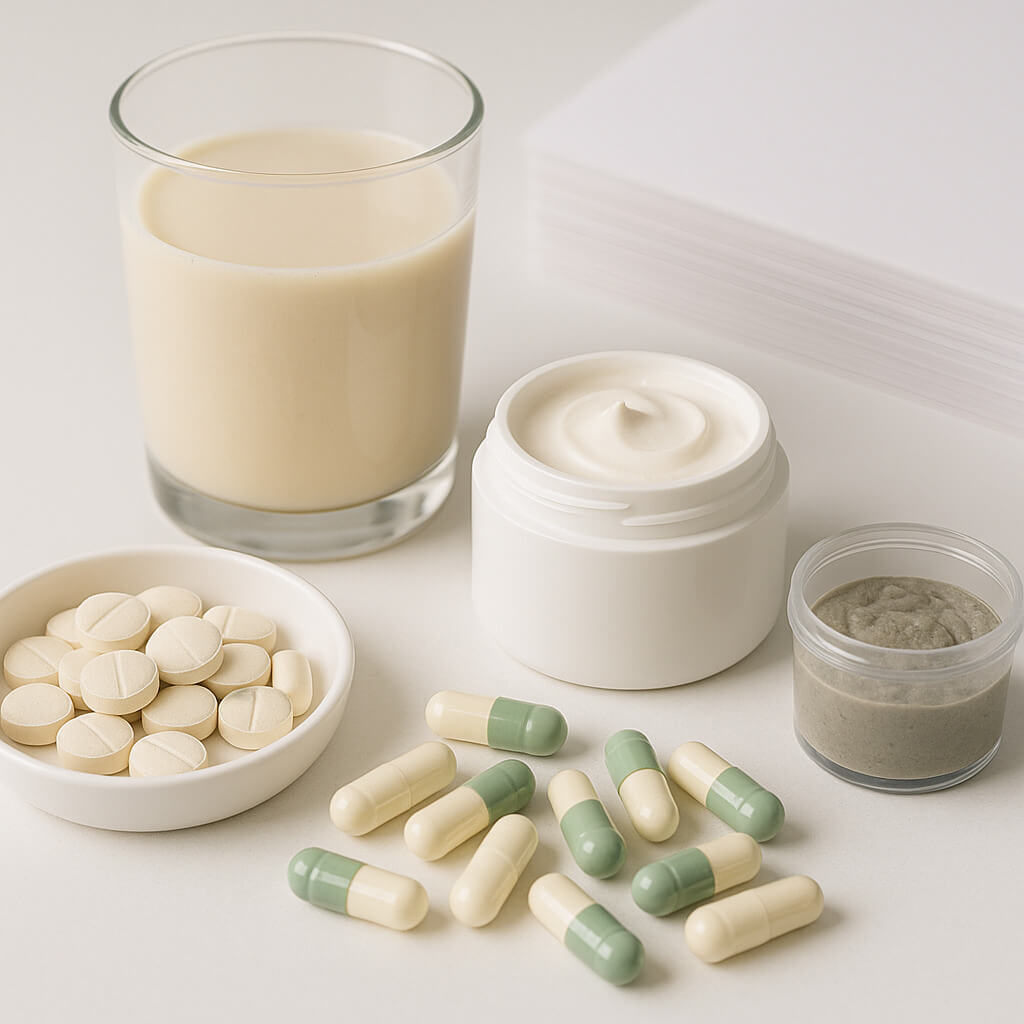Properly dissolving Hydroxypropyl Methylcellulose (HPMC) is a critical process that directly impacts product quality across numerous industries. Many manufacturers struggle with lumping, incomplete dissolution, and inconsistent results when working with this versatile polymer. This article provides a comprehensive guide to dissolving HPMC correctly, addressing the specific challenges faced in industrial settings. By following the techniques outlined here, you’ll achieve consistent, high-quality results while avoiding common pitfalls that compromise product performance.

1. What Is HPMC and Why Is Proper Dissolution Critical?
Hydroxypropyl Methylcellulose (HPMC) is a semi-synthetic, non-ionic cellulose ether derived from natural cellulose. It appears as a white to off-white powder that forms a clear, viscous solution when properly dissolved in water. This versatile polymer consists of cellulose backbones modified with hydroxypropyl and methyl groups, giving it unique properties that make it valuable across multiple industries.
Here’s the thing: improper dissolution of HPMC can completely undermine your product’s performance, regardless of how premium your HPMC grade might be.
The proper dissolution of HPMC is absolutely critical because it directly affects the functionality and performance of the final product. When HPMC isn’t dissolved correctly, it forms lumps or “fish eyes” – partially hydrated particles with dry powder trapped inside. These imperfections can cause serious quality issues, including inconsistent viscosity, reduced binding strength, poor film formation, and compromised stability.
| Промышленность | Consequences of Improper HPMC Dissolution |
|---|---|
| Фармацевтическая | Inconsistent drug release, compromised bioavailability |
| Строительство | Reduced adhesion, poor water retention, workability issues |
| Еда | Texture problems, inconsistent mouthfeel, stability issues |
| Личная гигиена | Graininess, separation, reduced product stability |
The dissolution process directly influences how HPMC molecules hydrate and unfold in solution, which determines their ability to form the proper network structure necessary for thickening, binding, film-forming, and stabilizing functions.
2. What Are the Key Factors Affecting HPMC Dissolution?
The dissolution of HPMC is influenced by several critical factors that must be carefully controlled to achieve optimal results. Understanding these variables allows manufacturers to develop effective dissolution protocols tailored to their specific applications.
Вам необходимо знать следующее: temperature is perhaps the single most influential factor in HPMC dissolution, but it’s not as simple as “hotter is better.”
Water temperature plays a crucial role in HPMC dissolution due to the polymer’s unique thermal gelation properties. HPMC exhibits inverse solubility – it becomes less soluble as temperature increases up to a certain point (typically around 85°C), after which it becomes insoluble and forms a gel. This behavior necessitates a specific approach: initial dispersion in cold water (below 25°C) to prevent immediate gelation, followed by heating for complete dissolution once particles are fully wetted.
| Недвижимость HPMC | Impact on Dissolution | Recommendation |
|---|---|---|
| Размер частиц | Finer particles hydrate faster but risk lumping | Match particle size to mixing capability |
| Класс вязкости | Higher viscosity grades dissolve more slowly | Allow longer dissolution time for high-viscosity grades |
| Концентрация | Higher concentrations increase dissolution difficulty | Disperse gradually for high-concentration solutions |
Concentration significantly affects dissolution behavior. Higher concentrations (above 2%) increase solution viscosity during dissolution, making it harder to achieve uniform mixing and complete hydration. This often requires specialized equipment or modified techniques.
The pH and solvent system also influence HPMC dissolution. While HPMC is stable across a wide pH range (3-11), extreme pH values can affect hydration rate. The presence of other solvents or solutes (like salts, sugars, or alcohols) can either promote or hinder dissolution by altering the solvent environment.
3. What’s the Step-by-Step Process for Dissolving HPMC Correctly?
Achieving perfect HPMC dissolution requires following a systematic approach that accounts for the polymer’s unique properties. This step-by-step process will help you avoid common pitfalls and ensure consistent results.
Позвольте мне прояснить: the “cold dispersion/hot dissolution” method is the gold standard for HPMC dissolution in most industrial applications.
Preparation Phase
- Gather all necessary equipment: appropriate mixing vessel, temperature-controlled water bath, suitable agitator (propeller, turbine, or high-shear mixer depending on volume and viscosity), thermometer, and pH meter if needed.
- Calculate the required amounts of HPMC and water based on your target concentration.
- Ensure the mixing vessel is clean and free from contaminants that might affect dissolution.
Cold Water Dispersion Technique
- Add approximately 1/3 of the total required water to the mixing vessel and cool it to below 10°C (50°F).
- Begin agitation at moderate to high speed to create a vortex without introducing excessive air.
- Slowly add the HPMC powder to the vortex, not directly to the center or sides of the vessel.
- Continue agitation until all particles are fully wetted and dispersed, typically 15-30 minutes depending on grade and quantity.
| Шаг | Action | Цель | Common Mistakes |
|---|---|---|---|
| 1 | Cool water to <10°C | Prevents immediate gelation | Using water that’s too warm |
| 2 | Create moderate vortex | Facilitates powder incorporation | Insufficient or excessive agitation |
| 3 | Add HPMC slowly to vortex | Prevents lumping | Dumping powder too quickly |
| 4 | Maintain agitation | Ensures complete wetting | Stopping agitation too soon |
Hot Water Addition and Complete Dissolution
- Once the HPMC is fully dispersed, slowly add the remaining water at a higher temperature (60-80°C).
- The overall temperature should rise to approximately 40-60°C, which accelerates the dissolution process.
- Continue mixing at a moderate speed for 30-60 minutes, or until the solution becomes completely clear and homogeneous.
- Allow the solution to cool to the desired application temperature while maintaining gentle agitation.
4. How Do Different HPMC Grades Require Different Dissolution Approaches?
Different grades of HPMC vary significantly in their chemical composition, viscosity, and substitution patterns, necessitating tailored dissolution approaches for optimal results.
Правда в том, что: a one-size-fits-all approach to HPMC dissolution will inevitably lead to processing problems and suboptimal product performance.
Low viscosity HPMC grades (typically below 100 mPa·s in 2% solution) dissolve relatively quickly and with less difficulty than higher viscosity grades. These grades can often be dissolved using standard equipment with moderate agitation. However, they’re more prone to lumping during the initial dispersion phase due to their rapid hydration rate. To counter this, manufacturers often use colder water (5-8°C) for the initial dispersion and may benefit from using a high-shear mixer for a short period during the dispersion phase.
High viscosity HPMC grades (above 4,000 mPa·s in 2% solution) present significant dissolution challenges. They require longer hydration times, more powerful mixing equipment, and careful temperature control. The solution becomes highly viscous even before complete dissolution, making effective mixing difficult. For these grades, a staged addition approach often works best – creating a lower concentration solution first, then gradually adding more polymer while maintaining effective agitation.
| HPMC Grade Type | Диапазон вязкости | Dissolution Challenges | Рекомендуемый подход |
|---|---|---|---|
| Низкая вязкость | <100 mPa·s | Rapid hydration, lumping risk | Very cold initial water, high-shear dispersion |
| Средняя вязкость | 100-4,000 mPa·s | Moderate dissolution time | Standard cold dispersion/hot dissolution |
| Высокая вязкость | >4,000 mPa·s | Difficult mixing, long dissolution time | Staged addition, powerful mixing equipment |
Food grade HPMC must meet strict purity and regulatory requirements. The dissolution process must avoid contamination and often requires dedicated equipment. Temperature control is particularly important for food applications, as many formulations are sensitive to thermal history.
Pharmaceutical grade HPMC (hypromellose) is subject to pharmacopeia standards and requires validated dissolution processes. Different substitution types have different dissolution profiles and functional properties.
5. What Are the Most Common Mistakes When Dissolving HPMC?
Despite its widespread industrial use, HPMC dissolution remains challenging for many manufacturers. Recognizing and avoiding common mistakes can save considerable time, material waste, and quality issues.
I can’t stress this enough: improper temperature management is the leading cause of HPMC dissolution failures across all industries.
Incorrect temperature control tops the list of dissolution mistakes. Using water that’s too warm (above 25°C) for initial dispersion causes immediate surface gelation of HPMC particles, creating a barrier that prevents water penetration to the particle core. This results in the characteristic “fish eyes” – partially hydrated particles with dry powder trapped inside. Conversely, failing to increase temperature after dispersion leads to excessively long dissolution times and potentially incomplete hydration.
| Common Mistake | Последствия | Prevention Strategy |
|---|---|---|
| Using warm water for initial dispersion | “Fish eyes” and lumping | Always use cold water (<10°C) for initial dispersion |
| Inadequate agitation | Uneven hydration, extended dissolution time | Use appropriate mixer type and speed for batch size |
| Adding powder too quickly | Agglomeration and lumping | Add powder slowly to vortex, consider powder feeders |
| Insufficient dissolution time | Incomplete hydration, inconsistent properties | Allow adequate time based on grade and concentration |
Inadequate dispersion is another frequent issue. Adding HPMC powder too quickly or to areas of low agitation allows particles to agglomerate before they’re individually wetted. This creates lumps that are extremely difficult to dissolve later. Proper powder addition requires creating an effective vortex without excessive air incorporation and adding the powder at a controlled rate directly to the vortex.
Insufficient mixing time and speed prevent complete hydration of all particles. Many manufacturers underestimate the time required for complete dissolution, especially for higher viscosity grades or higher concentrations.
6. How Can You Optimize HPMC Dissolution for Different Industrial Applications?
Optimizing HPMC dissolution for specific industrial applications requires understanding the unique requirements and constraints of each industry while applying fundamental dissolution principles.
Here’s what matters most: tailoring your dissolution process to your specific application requirements will yield far better results than simply following generic guidelines.
In pharmaceutical formulations, HPMC dissolution must meet strict regulatory and quality requirements. For controlled-release matrix tablets, complete and consistent hydration is essential to ensure predictable drug release profiles. Pharmaceutical manufacturers often employ validated dissolution processes with precise temperature control and mixing parameters. For higher viscosity grades used in matrix systems, a staged addition approach works well – creating a lower concentration “stock solution” that’s then diluted to working concentration.
| Промышленность | Критические требования | Стратегии оптимизации |
|---|---|---|
| Фармацевтическая | Consistency, validation, purity | Validated processes, analytical verification, staged addition |
| Строительство | Delayed hydration, workability | Pre-blending with dry ingredients, specialized grades |
| Пищевые продукты | Clean label, texture control | Cold processing techniques, specialized mixing |
| Личная гигиена | Clarity, stability, sensory properties | Careful pH control, compatibility testing |
Construction material applications often benefit from specialized HPMC grades designed for delayed dissolution. These grades allow better workability in cement, gypsum, and mortar applications. The optimization strategy often involves pre-blending HPMC with dry ingredients before adding water, which helps achieve more uniform distribution.
Food product applications require food-grade HPMC and often need to address clean label concerns. Cold processing techniques are preferred when possible to preserve other heat-sensitive ingredients.
7. What Advanced Technologies Can Improve HPMC Dissolution Efficiency?
As industrial demands for efficiency and consistency increase, advanced technologies are emerging to improve HPMC dissolution processes, offering benefits in speed, quality, and resource utilization.
The bottom line: investing in advanced dissolution technology can dramatically reduce processing time while improving consistency and reducing energy consumption.
High-shear mixing equipment represents one of the most significant advancements in HPMC processing. These systems use specially designed impellers or rotor-stator configurations to create intense shear zones that quickly disperse and wet HPMC particles. The high-shear action breaks up agglomerates and accelerates the hydration process. Modern high-shear mixers often incorporate vacuum capabilities to remove entrapped air, which is particularly beneficial for applications requiring clear solutions.
| Technology | Преимущества | Ограничения | Лучшие приложения |
|---|---|---|---|
| High-Shear Mixers | Rapid dispersion, reduced lumping | Higher energy consumption, potential polymer degradation | Medium to high volume production |
| Automated Systems | Consistency, reduced labor, documentation | Higher initial investment, system validation | Pharmaceutical, regulated products |
| In-line Monitoring | Real-time quality control, process optimization | Sensor calibration, maintenance requirements | Continuous processing, critical applications |
Automated dissolution systems integrate temperature control, powder addition, and mixing functions into a programmable platform. These systems ensure consistent processing parameters across batches, reducing variability and operator dependence.
In-line monitoring technologies allow real-time assessment of dissolution progress. Advanced systems use techniques like focused beam reflectance measurement (FBRM) to track particle size changes during dissolution, or viscosity sensors to monitor solution development.
Заключение
Proper dissolution of HPMC is fundamental to achieving optimal performance across all industrial applications. By understanding the unique properties of this versatile polymer and following the appropriate dissolution techniques, manufacturers can avoid common pitfalls and ensure consistent, high-quality results. The cold dispersion/hot dissolution method remains the gold standard for most applications, though specific modifications may be necessary depending on the HPMC grade and intended use. Implementing advanced technologies like high-shear mixing and automated systems can further improve efficiency and consistency. Companies that master HPMC dissolution gain a significant advantage in product quality, processing efficiency, and manufacturing reliability.
Раздел часто задаваемых вопросов
Q1: Can HPMC be dissolved directly in hot water?
No, HPMC should not be dissolved directly in hot water. HPMC exhibits inverse solubility, meaning it becomes less soluble as temperature increases up to a certain point. When added directly to hot water, the outer layer of each particle immediately forms a gel barrier that prevents water from penetrating to the core, resulting in lumps or “fish eyes.” The correct approach is to first disperse HPMC in cold water (below 10°C) to ensure complete wetting of all particles, then gradually increase the temperature to accelerate the dissolution process.
Q2: How long does it typically take to completely dissolve HPMC?
The time required to completely dissolve HPMC varies significantly based on several factors, including viscosity grade, particle size, concentration, temperature, and mixing efficiency. As a general guideline, low viscosity grades at concentrations below 2% may dissolve completely in 30-60 minutes with proper mixing. Medium viscosity grades typically require 1-2 hours, while high viscosity grades may need 3-4 hours or more for complete dissolution. Using high-shear mixing equipment can significantly reduce these times.
Q3: What’s the difference between dispersing and dissolving HPMC?
Dispersion and dissolution are two distinct phases in the HPMC hydration process. Dispersion refers to the initial distribution of dry HPMC particles throughout the liquid medium, ensuring each particle is individually wetted and separated from others. This phase occurs in cold water and prevents agglomeration. Dissolution is the subsequent process where the wetted HPMC particles fully hydrate and the polymer chains unfold and extend into the solution, creating a homogeneous system with the desired functional properties.
Q4: Can additives help improve HPMC dissolution?
Yes, several additives can significantly improve HPMC dissolution. Dispersion aids like glycerin, propylene glycol, or low concentrations of alcohols (ethanol, isopropanol) can enhance wetting and reduce surface tension, facilitating faster and more uniform dispersion. Some manufacturers offer pre-blended HPMC products containing integrated dispersion aids. Certain salts can affect the hydration rate, though their effect varies with the specific HPMC grade.
Q5: How can you tell if HPMC has been properly dissolved?
Properly dissolved HPMC solution exhibits several characteristic properties. Visually, the solution should be clear to slightly translucent without visible particles, lumps, or “fish eyes” when viewed against light. The viscosity should be consistent throughout the batch when tested at multiple locations. For more precise assessment, laboratory methods include measuring viscosity using a calibrated viscometer, light transmittance testing, and microscopic examination for undissolved particles.




